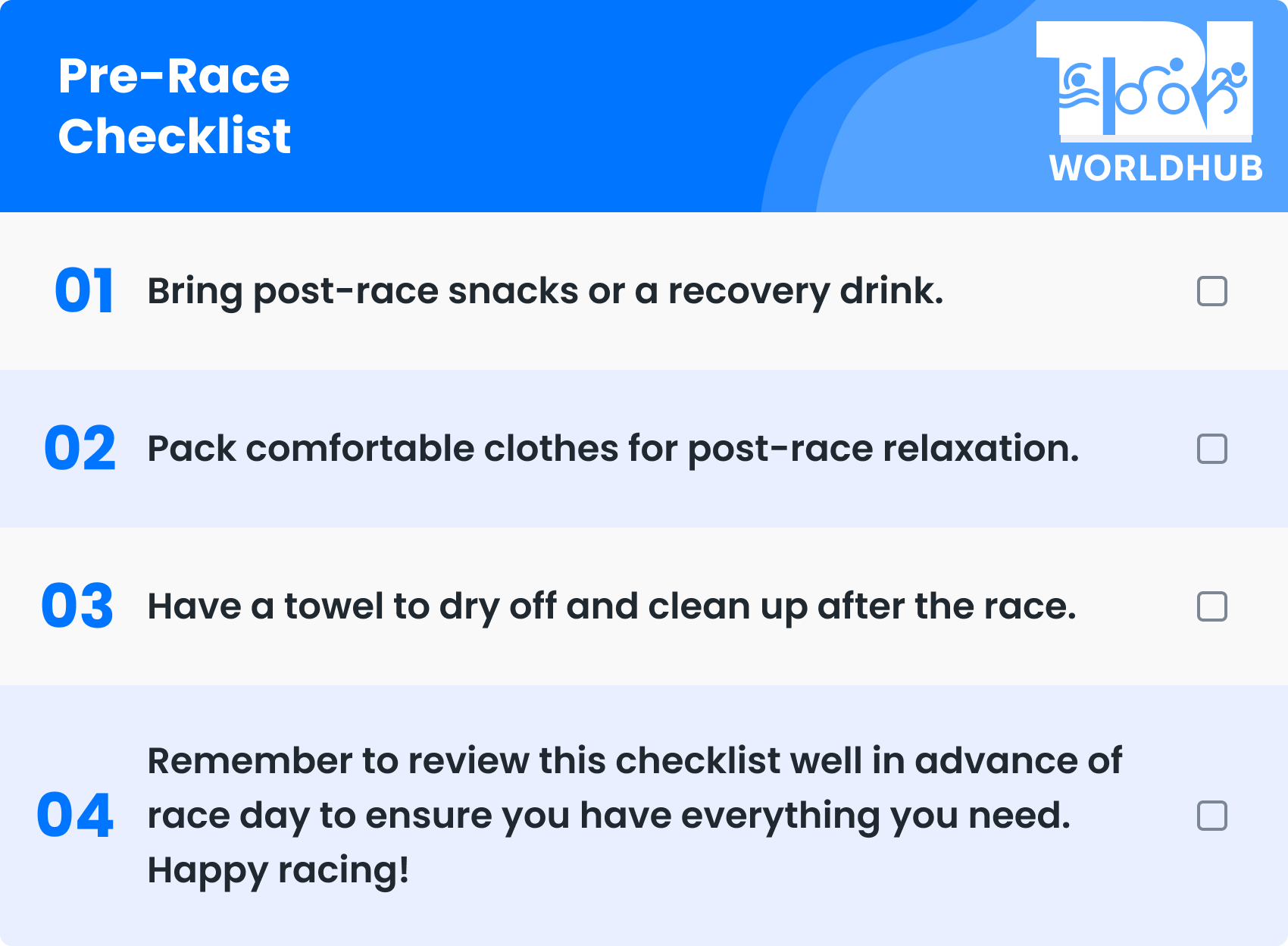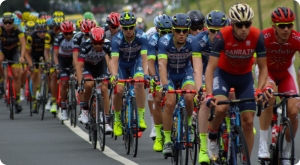Preparing for a triathlon requires meticulous planning to ensure you have everything you need on race day.
It is easy to get overwhelmed and forget something crucial, but don’t worry.
Our comprehensive checklist will help you stay on top of everything.
Here, we’ve gathered together everything you need to help you stay organized before you reach the start line.
Let’s dive in!
Race-Day Ready: What to Pack, Wear, and Do
Let’s collaborate!
Have questions, suggestions, or want to explore partnership opportunities? We’re here for you.
Pre-Race Essentials
Ensure you have your race bib, timing chip, and any other race documents.
Pack your triathlon gear bag with a swim cap, goggles, bike helmet, bike shoes, running shoes, race number, and any other necessary equipment.
Dress in comfortable, weather-appropriate clothing and pack any extra layers for before and after the race.
Prepare your pre-race nutrition, including snacks and hydration, and pack them in your bag. Here is everything you should know about triathlon nutrition during race.
Shower and apply sunscreen, body glide, or any other necessary products before leaving.

Swim Leg Essential Items
- Swimsuit
- Goggles. Bring spare goggles in case one breaks.
- Swim cap. Check if the race provides one; if not, bring your own.
- Body glide. Apply lubricant to prevent chafing.
- Bring a towel to dry off after the swim.

Transition 1 (T1 – Swim to Bike)
- Pack a bag with all necessary items for T1.
- Lay out your cycling shoes, helmet, sunglasses, and any other bike accessories.
- Place any nutrition you’ll need for the bike leg in your transition bag.
- Have a small towel to wipe off excess water and sand.
- Apply sunscreen before heading out on the bike leg.
- Consider bringing an extra layer in case of cold weather.
Bike Leg Essentials
Change in your tri suit.
Ensure your bike is in good working condition and properly tuned.
Double-check that your helmet meets safety standards and fits properly. Here is a detailed guide on how to choose a cycling helmet.
Fill your water bottles and place them in their holders.
Bring energy gels, bars, or electrolyte drinks for fuel.
Pack a spare tube, tire levers, and mini-pump or CO2 cartridges for emergencies.
Carry basic tools like multi-tools, and Allen wrenches for adjustments.

Transition 2 (T2 – Bike to Run):
- Pack into transition bag items needed for T2: running shoes, visor or cap, and race belt.
- Bring any additional nutrition for the run leg.
- Reapply sunscreen if needed.
- Consider carrying a handheld water bottle or hydration pack for the run.
- Apply more lubricant if necessary.
Run Leg Essentials
Running shoes.
A hat or visor.
Attach your race bib to a race belt for easy transition.
Carry any additional nutrition needed for the run.
Consider wearing compression socks or sleeves for support.
Pack a change of clothes and flip flops for post-race comfort.

Other Race Day Essentials
- Write down any relevant medical information or allergies.
- Prepare a list of your emergency contacts.
- Keep your phone fully charged for communication and emergencies.
Post-Race Checklist
- Bring post-race snacks or a recovery drink.
- Pack comfortable clothes for post-race relaxation.
- Have a towel to dry off and clean up after the race and warm closing in case of bad weather.
Remember to review this checklist well in advance of race day to ensure you have everything you need. Happy racing!







